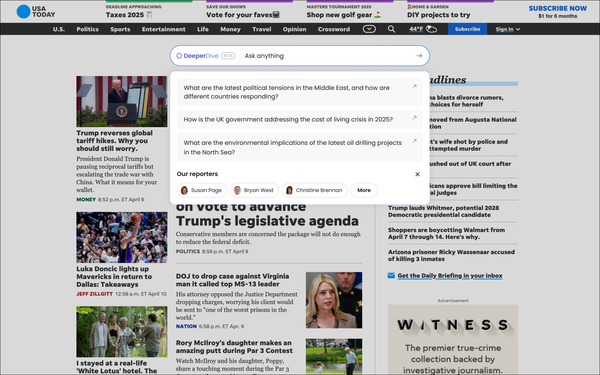
Gannett on Wednesday launched a
generative AI (GAI) engine to give readers real-time answers to questions on everything from sports highlights to financial news.
The tool, created by Taboola, will initially become
available on one of the publisher's news sites, USA Today, and pull answers from content across Gannett’s network of publications.
It also will have access to Taboola’s more than
600 million daily active users and 9,000 publisher partners worldwide. Quality and performance will be monitored by people, not AI.
The GAI engine can be considered a type of white
box search engine for publishers that Taboola could license across the web. It is not clear whether the AI engine has checks and balances to identify misinformation or sites where the content comes
from. It is also not clear whether the GAI engine can reason and analyze the available information to draw from and create its own conclusions.
advertisement
advertisement
USA Today reported that the engine
should give its publisher a better understanding of which topics and stories interest readers most.
While DeepDive is geared toward publishers, last week Taboola launched a Predictive
Audiences tool for advertisers that can tie into the tech company’s large network of publishers, apps and OEMs.
It has not been determined whether Taboola will integrate DeepDive with
Predictive Audiences to help support ad targeting based on searches in the GAI engine.
Predictive Audiences use an advertiser’s first-party conversion data to build AI-driven segments
that help target high-intent users across Taboola's network. It’s meant to boost acquisition efficiency and campaign performance.
The Motley Fool, QuinStreet, and NerdWallet are some of
the first companies to use the tool, which strengthens Taboola’s Realize suite of targeting tools. Some companies testing the tool during past year while in beta have seen conversion rates rise
270% — all with minimal change to their cost per acquisitions (CPAs).
The AI performance engine is powered by data from Taboola’s code-on-page integrations with publishers,
taking signals from the open web.